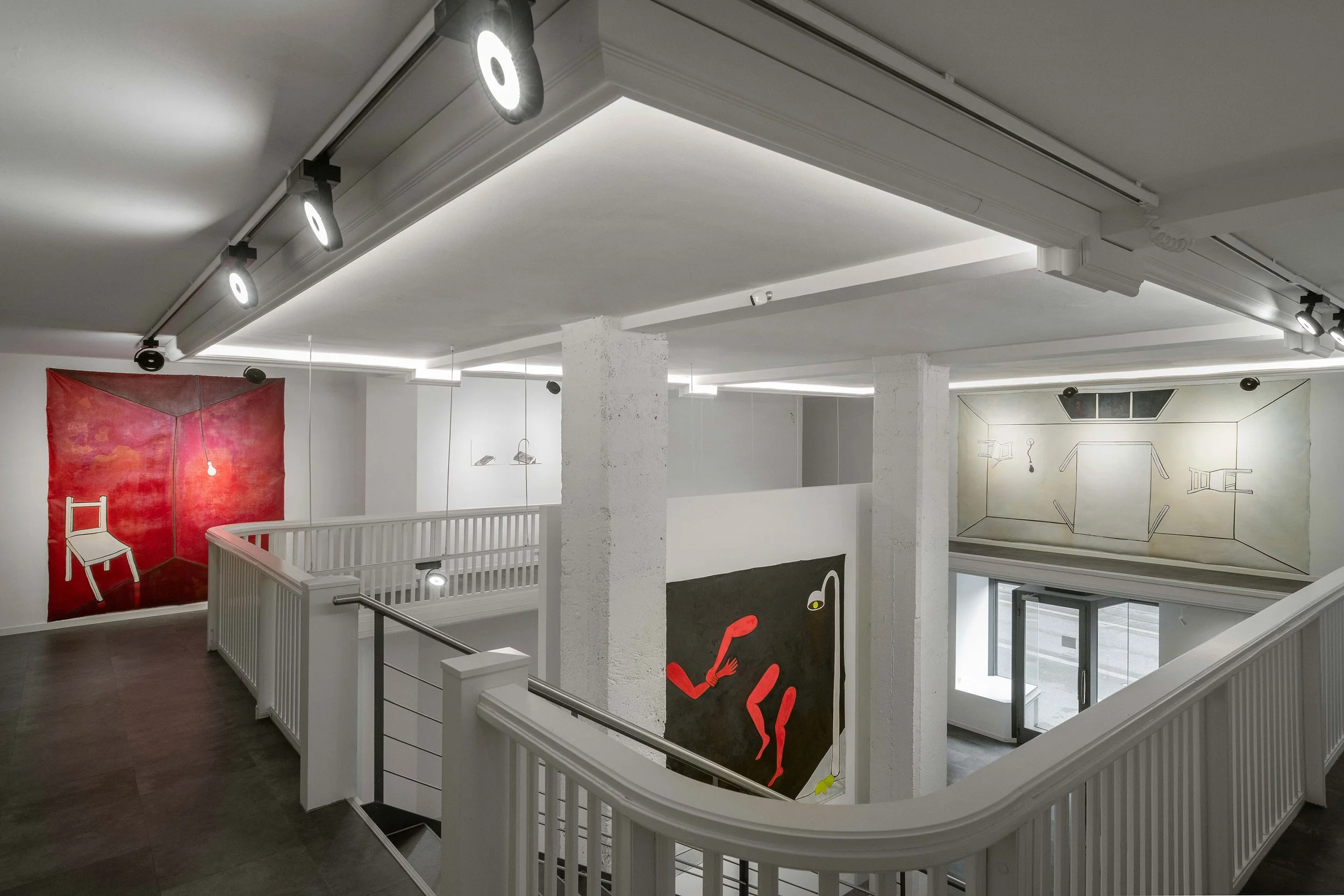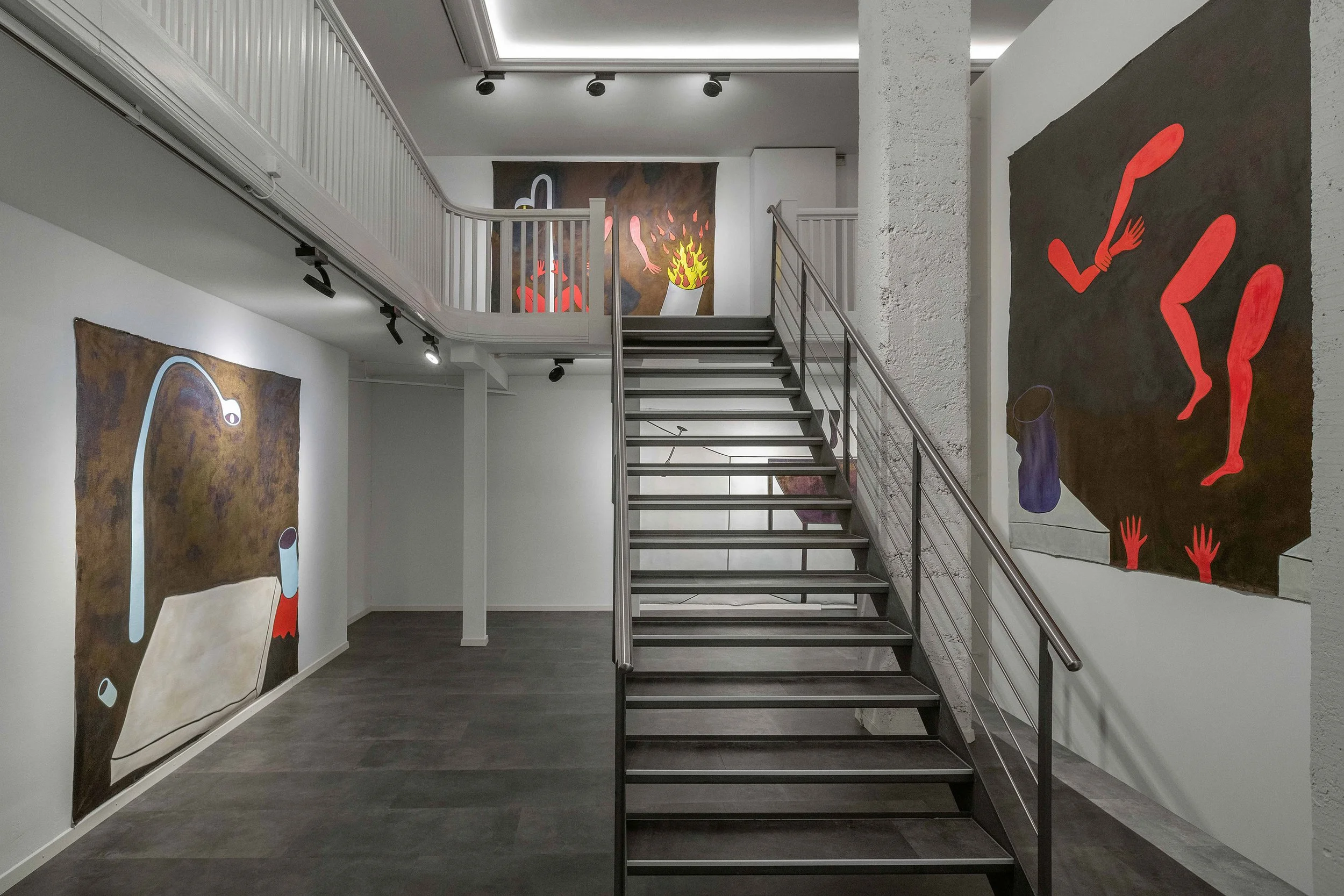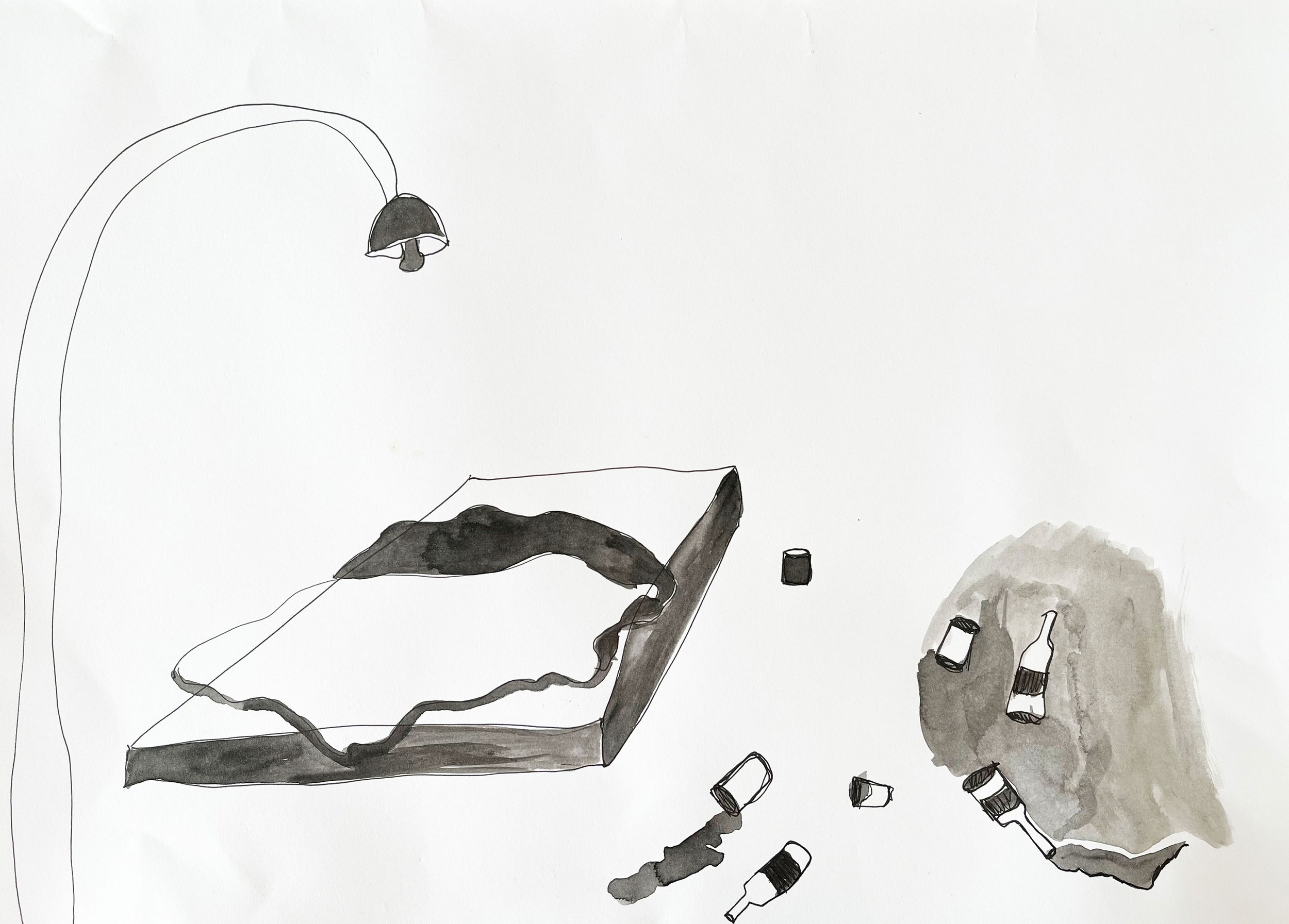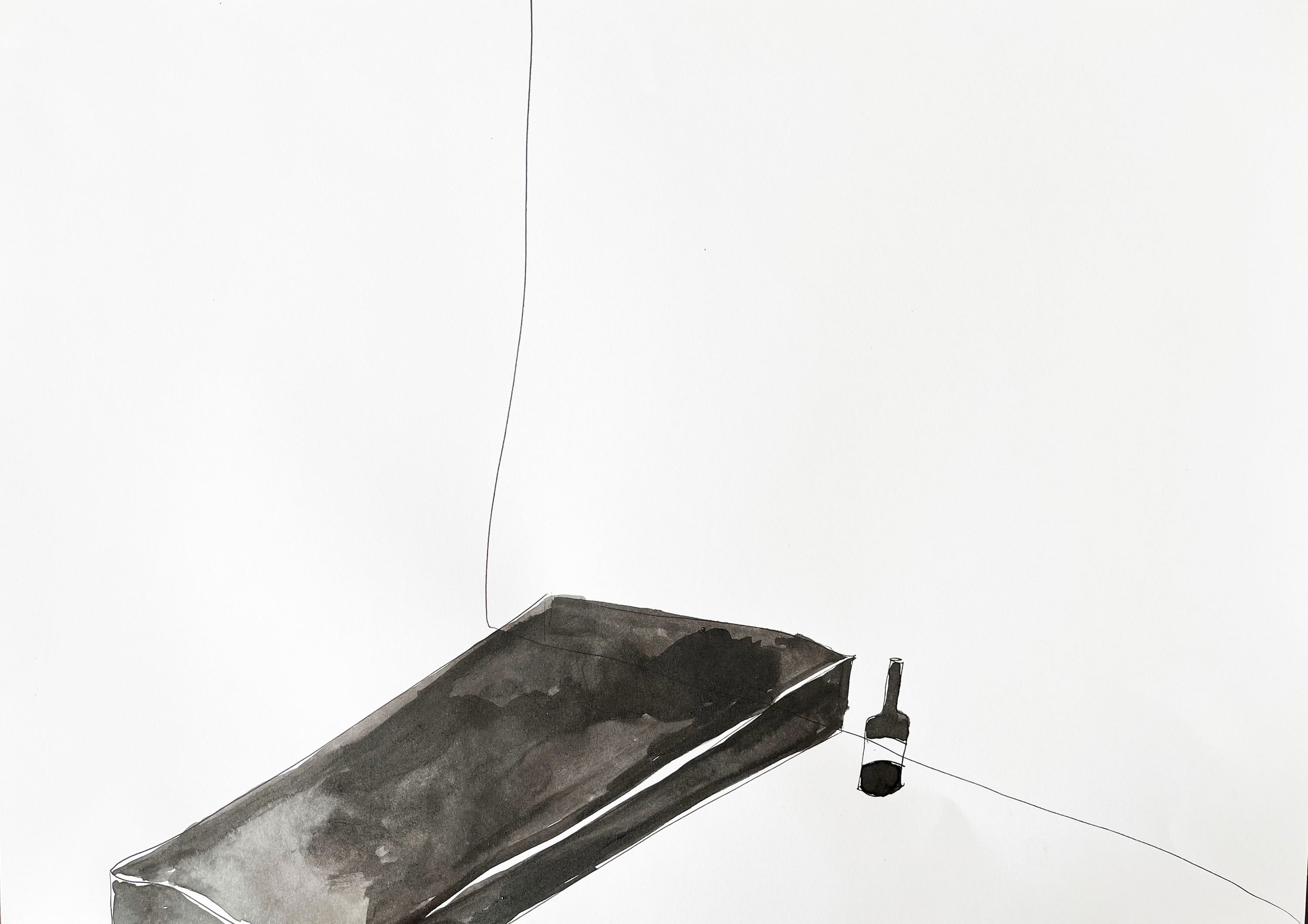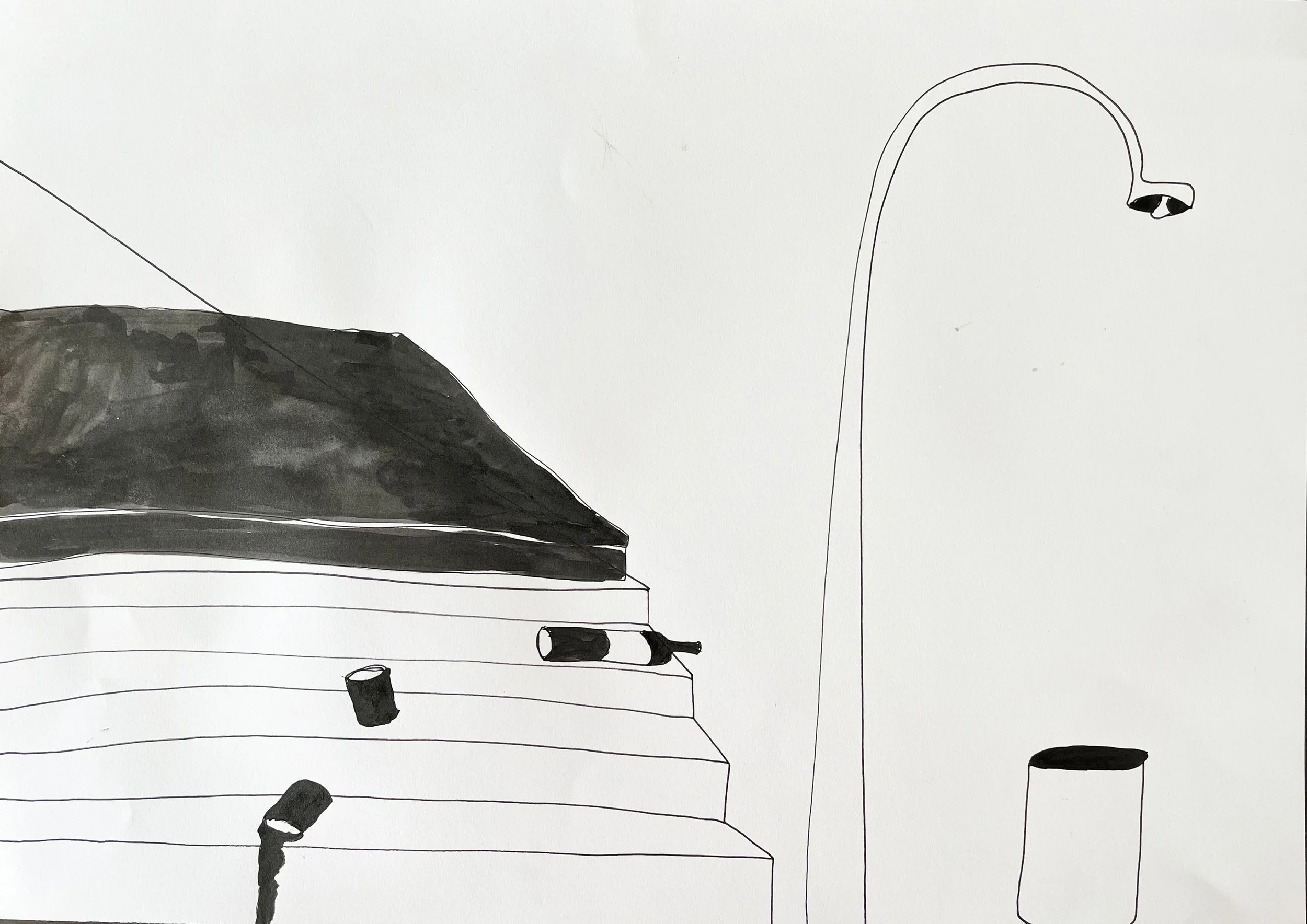Inka ter Haar
More than a feeling
5 February — 19 March 2022
I looked out this morning and the sun was gone
Turned on some music to start my day
I lost myself in a familiar song
I closed my eyes and I slipped away
— Tom Scholz
One of the many different definitions states that painting is a depiction of surfaces and figures, which, depending on their position, appear smaller or larger. This - admittedly relatively old theoretical approach - is simply the mathematics of perspective. In the paintings of Inka ter Haar, we initially find precisely this examination of the classical components of painting: the relationship between figure and ground. Her paintings are created in the process of a free translation of small-format drawings onto the large surfaces of the canvas. What can be seen are clearly recognizable objects in vibrant colors, which stand out against the monochrome backgrounds of the paintings through clear lines. Her paintings are "inhabited" by everyday objects made and used by people: Chairs, lamps, windows, mattresses, vessels. The human body appears, if at all, as a fragment. The aesthetics of her formal language and the vocabulary of her paintings are recognizable features. Together they create an idiosyncratic painterly characteristic. Inka ter Haar paints pictures that are basically as readable as you can decipher this text sentence. Although the laws of perspective seem to be suspended at times and instead of a classical illusionary space her painting emphasizes the illusion of the pictorial space as an optical illusion. The floor sways, the legs are trembling.
Painting, also in the case of Inka ter Haar's work, can be understood as a form of representation of content and meanings. If one views the medium of her choice through the lens of semiotics, then paintings, like written language, are a system of signs. Simply put, according to Umberto Eco, signs are material forms that to the viewer refer to something specific; to things they designate or name but are not themselves. Just as the word "chair" or its painted image are not the object itself, but are nevertheless perceived and recognized by us as "chair." Analogous to the words of a text, the signs in the paintings of Inka ter Haar can be understood as modules of a narrative. Thereby, she reduces the components of the narrative to the very essentials. Inka ter Haar merely hints at the events, aware of the mechanisms of the human mind, which is able to relate the single elements. The canvas of the picture becomes the place of an action with subtext. The canvas of the painting becomes the site of a plot with subtext. This makes her work appeal so mysterious.
Inka ter Haar's paintings are seductive. They invite us to pick up the thread of the plot, to let the narratives develop in our minds and to read between the lines. The figures in the paintings virtually become protagonists. The effects of the color tones create moods, similar to the effect of music in films. Inka ter Haar always works picture by picture on individual, self-contained series that deal with a certain theme over different scenes. In this sense, her drawings could be interpreted as a kind of storyboard, and when the series of paintings generated from them are hung in the exhibition space, the installation takes on an almost cinematic quality. The objects and body fragments suggest movements and gestures. The pictorial spaces she constructs appear like the backdrops of events. The curtain rises.
It is truly not comedies what we look at in her pictures. If we dwell on the analogy with the cinema, her work is most likely the genre of the thriller. Her images depict the eternal stories that speak of love, sexuality, violence and death. The choice of subjects she paints is an exploration of current events and is based on fundamental social issues as well as the experiences of interpersonal relationships. The tension in the plot is created by the deliberately developed ambiguity of the scenes, because Inka ter Haar's paintings, for all their clarity in depiction, elude a fixed interpretation. I would like to claim that the poetics and mystery in her paintings arise from the fact that a certain feeling slowly unfolds and intensifies over the duration of viewing. A feeling of unease that is consciously created and choreographed by Inka ter Haar in the way she uses her stylistic means. In the end, however, it is about more than just a feeling. It is about painting as a contemporary form of allegory, about mirrors and testimonies of human existence. A story to be continued.
— Alice Wilke
Untitled, 2021 Ink on paper 33 x 44 cm
Untitled, 2021 Ink on paper 33 x 44 cm
Untitled, 2021 Ink on paper 33 x 44 cm
